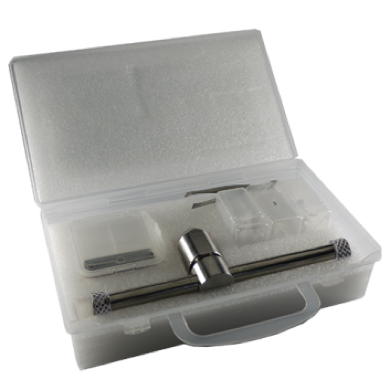Locks and Security News: your weekly locks and security industry newsletter
17th April 2024 Issue no. 701
Your industry news - first
We strongly recommend viewing Locks and Security News full size in your web browser. Click our masthead above to visit our website version.
Get the Tradelocks' designed 'ABS Cylinder Opening Tool'
 Defeat the ABS 3* Cylinder with the new tool from Tradelocks! The brand new 'ABS Opening Tool' (not manufactured by ABS), guarantees access to the ABS 3* Kitemarked Cylinder, in just minutes, with little to no prior knowledge of locks.
Defeat the ABS 3* Cylinder with the new tool from Tradelocks! The brand new 'ABS Opening Tool' (not manufactured by ABS), guarantees access to the ABS 3* Kitemarked Cylinder, in just minutes, with little to no prior knowledge of locks.
3* cylinders are the highest rated locks and harder to get into then standard non-kitemarked or 1* Kitemarked locks. But the new opening tool which specifically tackles the ABS 3* cylinder, has been designed by Tradelocks to undermine the dimple keyway that ABS, amongst others, have used. It is a semi-destructive opening tool as it does snap some of the pins inside the cylinder. But, if used correctly, the original key should still work even once the cylinder has been defeated - leaving almost no trace of entry.
How it works:
David Jennings, UAP MD explains how the tool works: "The ABS lock uses a dimple style keyway which has 5 pin chambers lined in a row - the pins have a 'pin in pin' arrangement. The height of the keyway is around 2.5mm, and the gap at the top right of the pin is in excess of 5mm, making quite a large hole to insert picks and other tools.
Of the 5 pin stacks, one of them has a magnetic pin which lifts upwards when the key, with the correct magnet position is inserted.
To use the tool, the position of the magnetic pin must be located in the cylinder. This can be done either by eye or by using a simple diamond pick, or hook. It involves pushing each pin out of the way one at a time until the correct position is found.
Once the magnetic pin has been located, the key can be made up.
Next, the correct blade must be chosen; there are 5 in total, 1 for each magnetic pin position. The relevant foam piece for the blade must also be chosen and there are different sizes depending where the pins will be sitting. The pieces must be placed into the blade profile using the included tweezers, to allow it to lift the pins.
The blade replicates the key; so when you insert it into the lock, the magnet will rise up. The remaining 4 pin stacks will settle into the foam and some will open."
Once the blade has been inserted into the lock, the ABS Tool [Not Manufactured by ABS] can now be used by being slotted onto the blade and tightened.
David went on to explain how to use the opening tool to weaken the pins: "Slowly apply pressure to each side of the T Torsion Bar, slowly rocking it from side to side until the lock opens. Once unlocked, the original key should still work in the cylinder!"
This tool is not manufactured by the makers of the ABS Cylinder or any company associated with the ABS Cylinder.
To find out more, visit www.tradelocks.co.uk
20th April 2016








